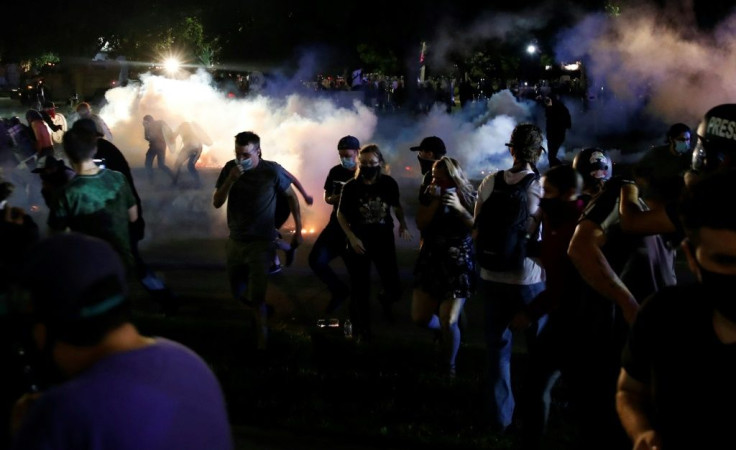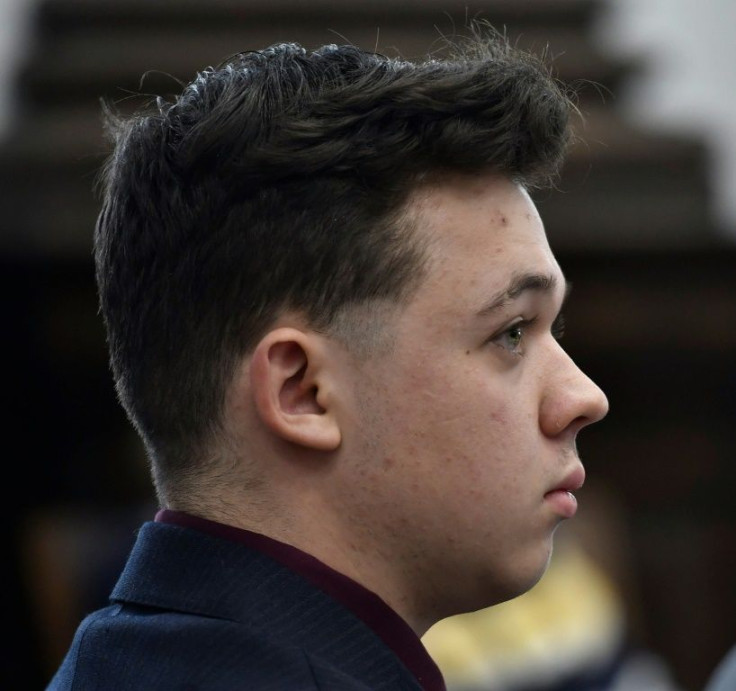Self-defense Claimed As Trial Opens In Killings At Anti-racism Protest
Attorneys for Kyle Rittenhouse, the American teen who shot three people during anti-police protests last year, claimed he had been attacked "like an animal" and acted in self-defense as arguments opened Tuesday in the politically charged murder trial.
Mark Richards, representing the then-17-year-old who killed two men and wounded a third with his assault rifle at the August 25, 2020 protest in Kenosha, Wisconsin, depicted Rittenhouse as under mortal threat from demonstrators.
Reflecting the stark public divide over the case, which arose from the nationwide Black Lives Matter demonstrations last year, Kenosha County prosecutor Thomas Binger argued the opposite.
Like a "tourist" who came to Kenosha from outside attracted by the protests, Rittenhouse brought his weapon seeking trouble, and was the only person who shot anyone else that evening, said Binger.
"Tourists from outside of our community were drawn to chaos here in Kenosha," said Binger, the county assistant district attorney.
"Yet out of these hundreds of people, only one person killed anyone that night. Only one person shot anyone that night," he said.
Rittenhouse is charged with five felony counts, including first-degree homicide and attempted homicide, and a misdemeanor, illegal possession of a dangerous weapon by a person under 18.

Now 18, he sat in court in a dark suit with a purple shirt and tie, listening expressionless in front of the jury who will determine his fate.
The shooting arose after anti-police protests erupted in Kenosha when a white policeman shot a Black man, Jacob Blake, several times in his car during an arrest, leaving him paralyzed.
Days of protests turned violent at night with buildings and businesses looted and burned.
Rittenhouse's case has drawn national attention.
His critics say he represents armed vigilantes on the right who police allegedly permitted, if not encouraged, to take the law into their own hands against protestors.
But in right-wing and pro-gun circles, and among supporters of former president Donald Trump, Rittenhouse is a hero figure.
Protesters "violently attacked him," Trump said during a pre-election visit to Kenosha in September. "He probably would have been killed."
After his arrest Rittenhouse was freed on bail of $2 million, raised by supporters across the country, including from Trump's own circle.

A resident of Antioch, in neighboring Illinois, Rittenhouse drove the 20 miles (30 kilometers) to Kenosha where he joined dozens of others who said they were there to protect local businesses from looting and damage after rioting.
Multiple videos and photographs captured his movements that night.
In one, Rittenhouse can be seen fleeing after shooting Joseph Rosenbaum four times.
On another, he is being chased by a small group of protesters who hit and kick him and attempt to pull his weapon away. From the ground Rittenhouse shoots Anthony Huber one time, killing him, and then shoots another man, Gaige Grosskreutz, in the arm.
Richards argued that Rosenbaum had threatened to take Rittenhouse's gun and kill him.
The other two who were shot "attacked him (Rittenhouse) in the street like an animal," said Richards.
"Kyle Rittenhouse protected himself and his firearm so it couldn't be taken and used against him," said Richards.
Binger though said self-defense laws are narrow and Rittenhouse was not justified in using deadly force.
"There is a privilege under our laws to use deadly force but it's a very limited privilege," he said.
The first witness was Dominick Black, a friend of Rittenhouse who had purchased the AR-15-style assault rifle for him.
Black testified that the two had gone to the protests that night armed to protect car dealerships that had been attacked.
On the roof of one dealership, Black did not see the shootings, but said that in a brief phone call minutes later, Rittenhouse said: "I shot somebody, I shot somebody."
Later, when they met, Rittenhouse "just said he had to do it; it was self-defense," recalled Black, who is facing charges for buying the gun.
Testimony from the second witness was not televised or broadcast. But according to journalists in the courtroom it was an FBI agent who testified about video taken from overhead during the protests.
The prosecution believes the video will show that Rittenhouse pursued Rosenbaum before shooting him.
© Copyright AFP 2024. All rights reserved.



















